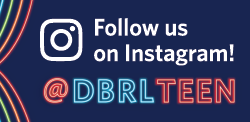“Will you catch me?”
“I’ll try.”
What’s the story?
“M Is for Monster” is one of the innumerable adaptations of Mary Shelley’s Frankenstein. I wonder how Mary Shelley would feel about her book being taken apart and put back together so many times? That question aside, this adaptation earns its place. Full disclosure reader, I have never read the original Frankenstein in its entirety, but I’d also say the gist of the story permeates our pop culture just as much as Star Wars or The Wizard of Oz. In this version Maura is brought back to life by her sister Frances, except she doesn’t feel like Maura, she doesn’t feel like anyone. Frances promises to take Maura apart and try again if it doesn’t work out, but Maura knows she wants to keep being even if she doesn’t know entirely what that means. Maura discovers that she can still communicate with the ghost of her former self through reflections, but that also cements the knowledge that she is something different and from then on she thinks of herself as M. From there the story centers around how long M can/will pretend that she is Maura and this is also where we really go off the track from the original storyline. In spite of what the title would have you believe M is not a monster, the townsfolk are not afraid of her (quite the opposite), and she does not commit monstrous acts.
I think it is safe to say this book is intended to be read as a metaphor for transitioning and/or coming out of the closet. The idea of a new body serves that metaphor well and the concept of dead naming (very literally) comes up as well. But the themes can apply to anyone who has ever struggled to change or tell people who they really are and found that other people would rather not listen. M struggles to fit in, not because she is a monster, but because she just isn’t the person Frances so desperately wants her to be. Perhaps it’s the nature of the medium, but I find it rare that graphic novels are about more than what the surface of the story is and that’s not a critique of other books, but this one deserves some time dedicated to reflecting on its message.
Who do we see in this book?
A lot of white people, though that can partly be chalked up to the fact that the book uses three colors exclusively white, black, and a sort of sea green. Also, while the story deviates considerably from its source material, the time period and setting are more or less the same and all of the characters in the original Frankenstein are of Western European persuasion. There is some representation of alternative gender/sexuality as Frances’ spouse uses they/them pronouns, but their character is primarily there as the voice of reason and mediation between Frances and her (not) sister. The book sticks tightly to the focus of the sister relationship, so other characters don’t ever really see the spotlight.
How are the thinks?
🔩🔩🔩🔩⚡
4 out of 5 neckbolts*. I considered rating this on the feels scale and probably some people would, but for me, I wanted to evaluate the book on how much I thought about it after reading it, which is a fair bit. The only reason it falls short is that it introduces a few concepts and never follows up on them. As an example: at one point M is frustrated and causes herself to bleed by squeezing her fist too tightly, this seemed to imply that M might indeed have superhuman strength like the creature from the original story, but it never comes up again.💁♂️
*Dear reader, I regret to inform you that there are no neckbolts in this story. I know, I’m as devastated as you are.

